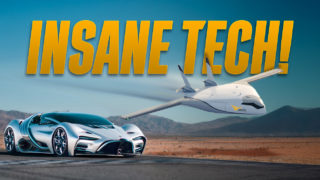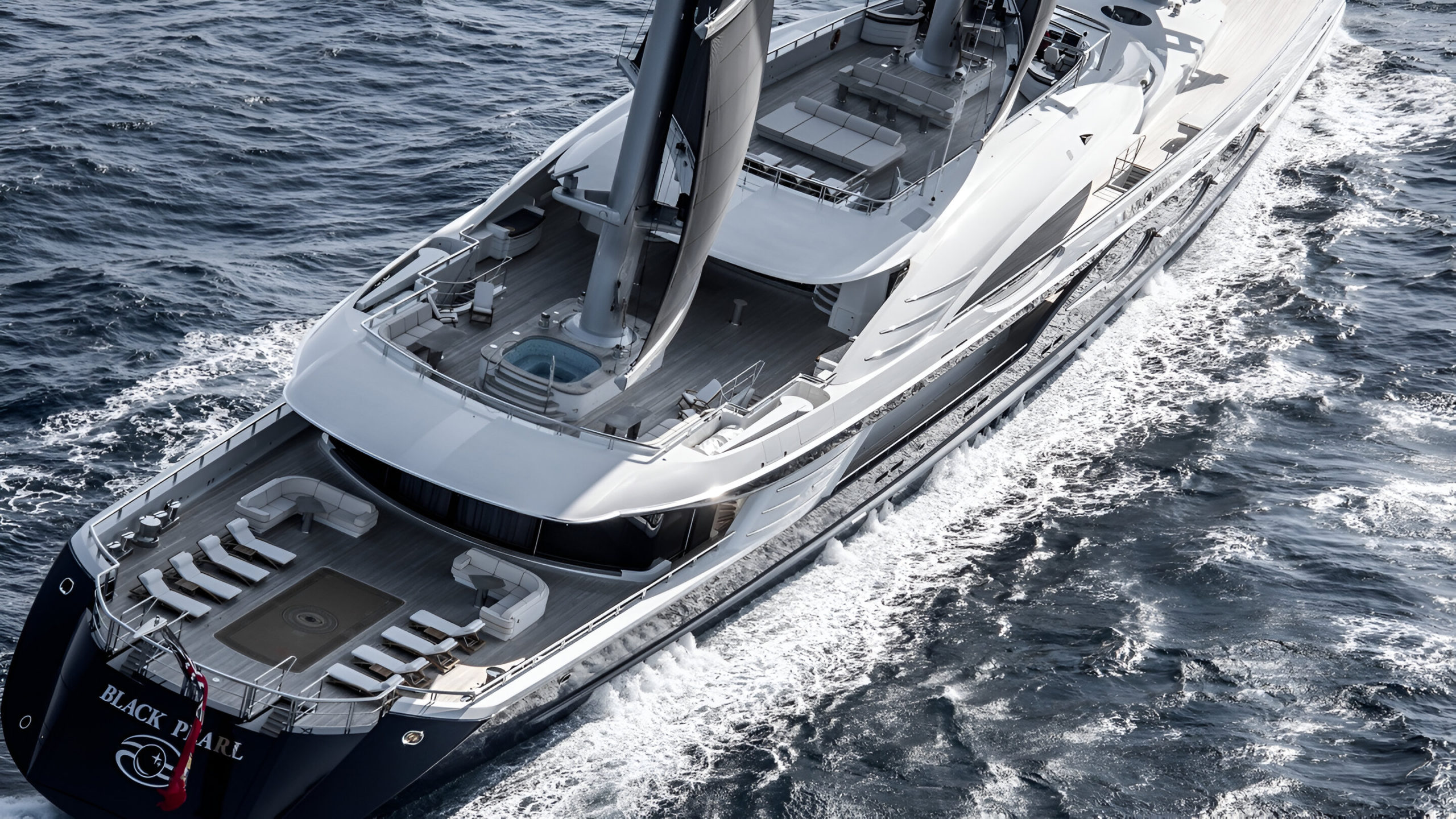The most important American cars never reached your local dealership. In the 1950s and early 60s, Detroit’s design studios crafted vehicles that looked more like spaceships than family transportation. They built cars with bubble canopies, adjustable body panels, and computers years before the first calculator. Some even (theoretically) came with their own nuclear reactors.
These forgotten prototypes changed everything about how we drive.
10. 1951 GM LeSabre (Exterior)

The LeSabre concept car revolutionized automotive design with its aircraft-inspired bodywork. Harley Earl’s team created this $500,000 prototype to showcase GM’s vision of the future. The car featured a wraparound windshield, tail fins resembling a fighter jet, and chrome accents that captured the aviation aesthetic of the era. You’ll notice the distinctive front end with its central chrome spear and dual headlights, elements that influenced Buick’s design language for years to come.
1951 GM LeSabre (Interior)

Inside the LeSabre, GM crafted a cockpit that mirrored contemporary aircraft design. The dashboard contained 43 separate controls and indicators, creating an environment that felt more like a fighter jet than a car. The seats featured waterproof leather upholstery with built-in heating elements, while a moisture sensor automatically raised the power top when rain began to fall. The centerpiece was an aircraft-style instrument panel with illuminated gauges and switches.
09. 1953 Chevrolet Corvette EX52 (Exterior)

The EX52 concept established the foundation for America’s most iconic sports car. This first Corvette prototype debuted at the 1953 Motorama, featuring a sleek fiberglass body that reduced production costs and weight. The distinctive front grille contained 13 vertical chrome bars, while the sides displayed clean, unbroken lines that flowed from front to rear. The car’s low-slung profile and rounded fenders created a revolutionary departure from traditional American car design.
1953 Chevrolet Corvette EX52 (Interior)

Chevrolet designed the EX52’s interior with a driver-focused layout that would define sports car cockpits for decades. The two-seat configuration featured twin pods housing the main instruments, with a center console angled toward the driver. Premium materials included genuine leather seats and a three-spoke steering wheel with a chrome horn ring. The dashboard utilized aircraft-inspired gauges with clear visibility for high-speed driving.
08. 1954 Lincoln Futura (Exterior)

The Futura captivated audiences with its double-bubble canopy and exaggerated fins. Italian coachbuilder Ghia hand-crafted this $250,000 concept in Turin, featuring pearlescent white paint that changed color under different lighting conditions. The car’s most striking features included hooded headlights, canted tailfins, and chrome accent lines that traced the length of its body. You’ll recognize this design as the basis for the original Batmobile in the 1960s Batman TV series.
1954 Lincoln Futura (Interior)

Lincoln created a space-age cockpit within the Futura’s twin-bubble canopy. The interior featured a central console that extended from the dashboard to between the seats, housing controls for the air conditioning and radio. The instrument panel contained illuminated push-buttons, eliminating traditional knobs and switches. The seats swiveled outward when the canopy opened, making entry and exit more graceful.
07. 1954 Ford La Tosca (Exterior)

The La Tosca demonstrated Ford’s vision of aerodynamic efficiency. The car featured a sloping hood that flowed into a panoramic windshield, while the rear featured a distinctive boat-tail design. The concept incorporated retractable headlights, a feature that wouldn’t become common until the 1960s. The smooth body panels and minimal chrome trim represented a departure from the excess of contemporary designs.
1954 Ford La Tosca (Interior)

Ford designed the La Tosca’s interior with an emphasis on passenger comfort and visibility. The cabin featured a floating instrument panel that appeared to hover in front of the dashboard. The seats used a new foam padding technology that provided superior comfort, while the rear passengers enjoyed individual bucket seats. The extensive glass area created an open, airy feeling throughout the interior.
06. 1956 Oldsmobile Golden Rocket (Exterior)
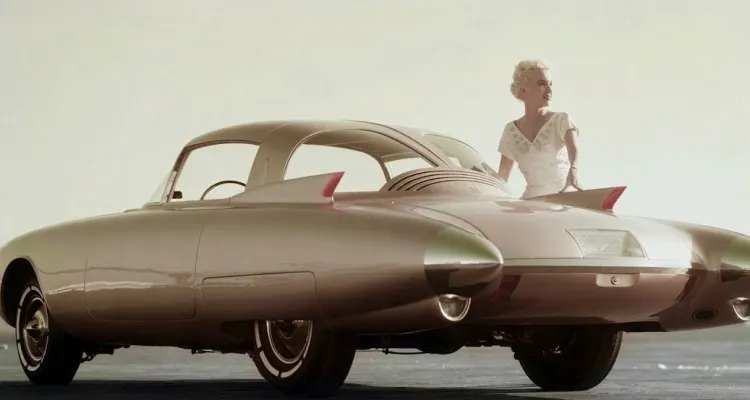
The Golden Rocket lived up to its name with a dramatic, missile-inspired design. The car stood just 41 inches tall, making it one of the lowest concept cars of its era. The front featured a pointed nose with retractable headlights, while the rear displayed twin afterburner-style taillights. Chrome strips ran along the sides, emphasizing the car’s horizontal lines and creating a sense of motion even when stationary.
1956 Oldsmobile Golden Rocket (Interior)

Oldsmobile created an aircraft-inspired cockpit for the Golden Rocket. The seats automatically raised and swiveled outward when the doors opened, while the steering column tilted forward for easier entry. The instrument panel featured a unique spherical housing for the gauges, and the center console contained aircraft-style toggle switches. You’ll find the interior remarkably prescient of modern sports car designs. However, if you’re more interested in concept cars designed in 2024, we have 15 game changing ones that might be worth a quick look.
05. 1956 GM Firebird II (Exterior)
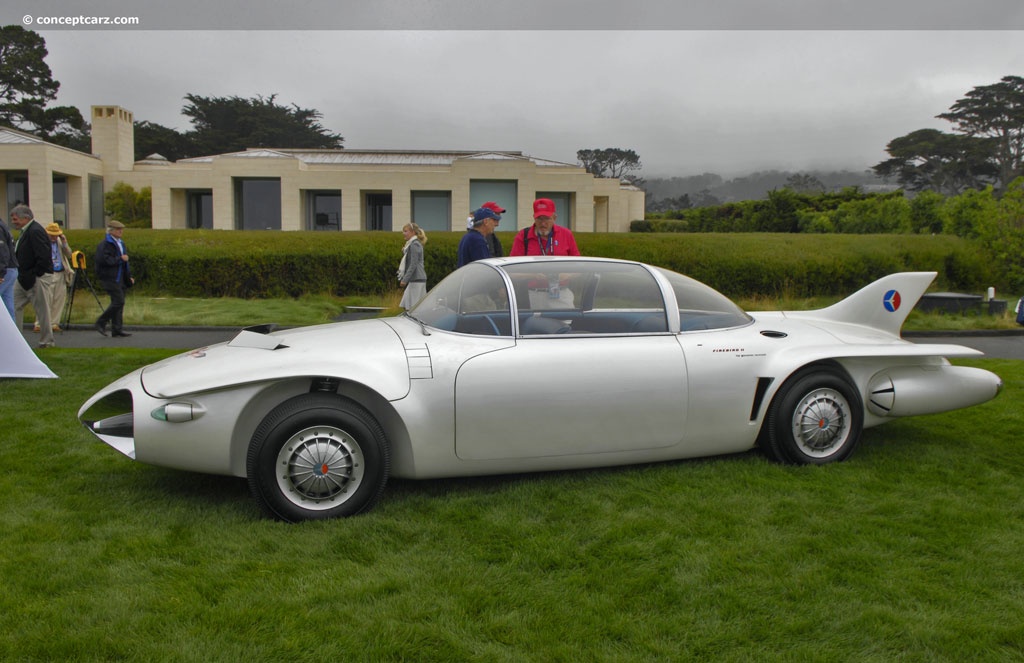
The Firebird II represented GM’s vision of future highway travel. The titanium-bodied concept featured gas turbine power and a distinctive dome-shaped passenger compartment. Four wings swept back from the central body, each housing an individual wheel in its own pod. The nose contained a prominent air intake for the turbine engine, while the tail section featured a sophisticated exhaust system designed to reduce heat signatures.
1956 GM Firebird II (Interior)

GM equipped the Firebird II with an interior focused on automated driving. The cabin featured an early guidance system that could follow metallic strips embedded in the road. The dashboard contained a television-like screen for navigation, while the steering wheel could fold away during automated driving. You’ll find four individual bucket seats separated by a central console that housed climate controls for each passenger.
04. 1957 Ford Nucleon (Exterior)

The 1957 Ford Nucleon showcased Ford’s atomic-age vision of nuclear-powered transportation. The concept featured a unique cab-forward design to accommodate its theoretical nuclear reactor powerplant. The rear section contained a large cylindrical housing for the reactor core, while the passenger compartment sat far forward for radiation safety. Twin booms extended from the rear, supporting the distinctive tail fins.
Ford designed the Nucleon’s interior to reflect its atomic-age technology. The cabin featured a split-level dashboard with nuclear monitoring gauges and radiation safety indicators. The seats used special shielding materials in their construction, while the windows contained protective glazing. A chemical air filtration system ensured passenger safety in the theoretical nuclear-powered vehicle.
03. 1961 Chrysler TurboFlite (Exterior)
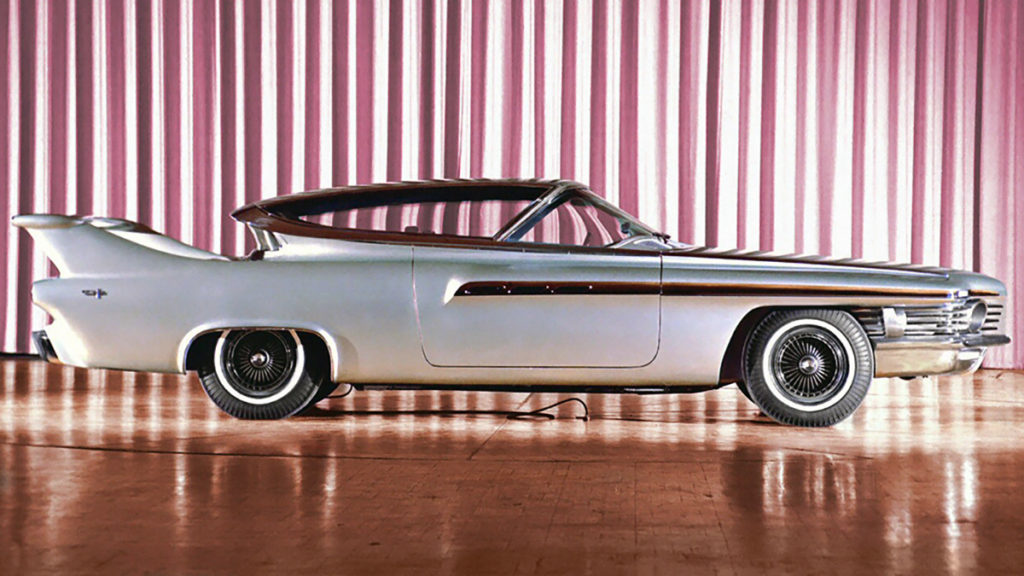
The TurboFlite demonstrated Chrysler’s commitment to aerodynamic innovation. The car featured an electrohydraulic canopy that lifted forward for entry and exit. The body incorporated retractable airbrakes in the rear fins, while the front displayed a dramatic V-shaped grille. You’ll notice the smooth, unbroken lines that flow from the pointed nose to the elevated tail section. These kind of design elements are pretty common around most futuristic transportation inventions.
1961 Chrysler TurboFlite (Interior)
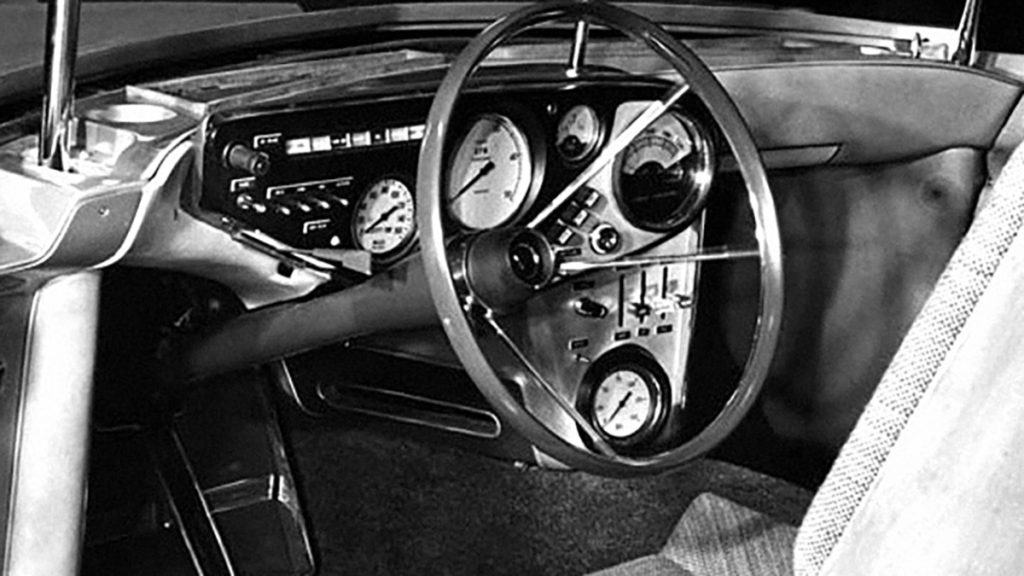
Chrysler created an aviation-inspired cockpit for the TurboFlite. The interior featured a wraparound instrument panel with electroluminescent lighting for the gauges. Individual bucket seats provided four-passenger seating, while the center console contained controls for the turbine engine. The canopy’s design eliminated traditional door pillars, offering unobstructed visibility in all directions.
02. 1963 Chrysler Turbine Car (Exterior)

The Chrysler Turbine Car represented a production-ready vision of turbine power. The company built 55 examples for real-world testing by ordinary consumers. The body featured distinctive side air intakes for the turbine engine, while the front displayed quad headlights and a horizontal grille. You’ll notice the clean, understated design avoided the excessive chrome and fins of earlier concepts, suggesting a more practical approach to futuristic styling.
1963 Chrysler Turbine Car (Interior)

Chrysler designed the Turbine Car’s interior for everyday usability. The cabin featured a conventional layout with leather bucket seats and a full-width dashboard. The tachometer displayed readings up to 60,000 RPM to accommodate the turbine engine’s characteristics. The center console contained simple controls for the automatic transmission and climate system, while the instrument panel used conventional gauges with special calibrations for turbine operation.
01. 1963 Ford Seattle-ite XXI (Exterior)
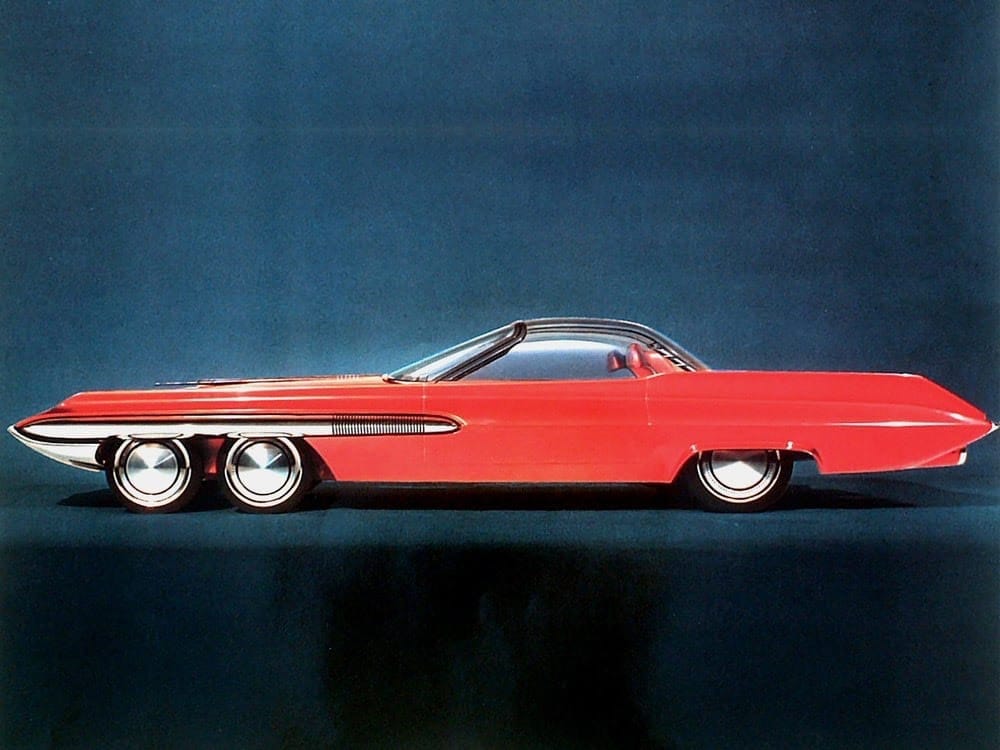
The Seattle-ite XXI showcased Ford’s vision of 21st-century transportation. The concept featured six wheels and modular body components that could be swapped to change the vehicle’s function. The front section displayed a dramatic V-shaped grille and interchangeable front ends, while the rear incorporated expandable cargo sections. The design included provisions for multiple power sources, including nuclear, electric, and conventional engines.
1963 Ford Seattle-ite XXI (Interior)

Ford created a highly advanced interior for the Seattle-ite XXI concept. The cabin featured a computer-controlled navigation system that could preprogram routes and calculate travel times. Individual climate controls served each passenger, while the driver’s position included early concepts for computer-aided driving assistance. The modular design allowed for different interior configurations, from luxury transportation to mobile office layouts, anticipating modern autonomous vehicle concepts.





